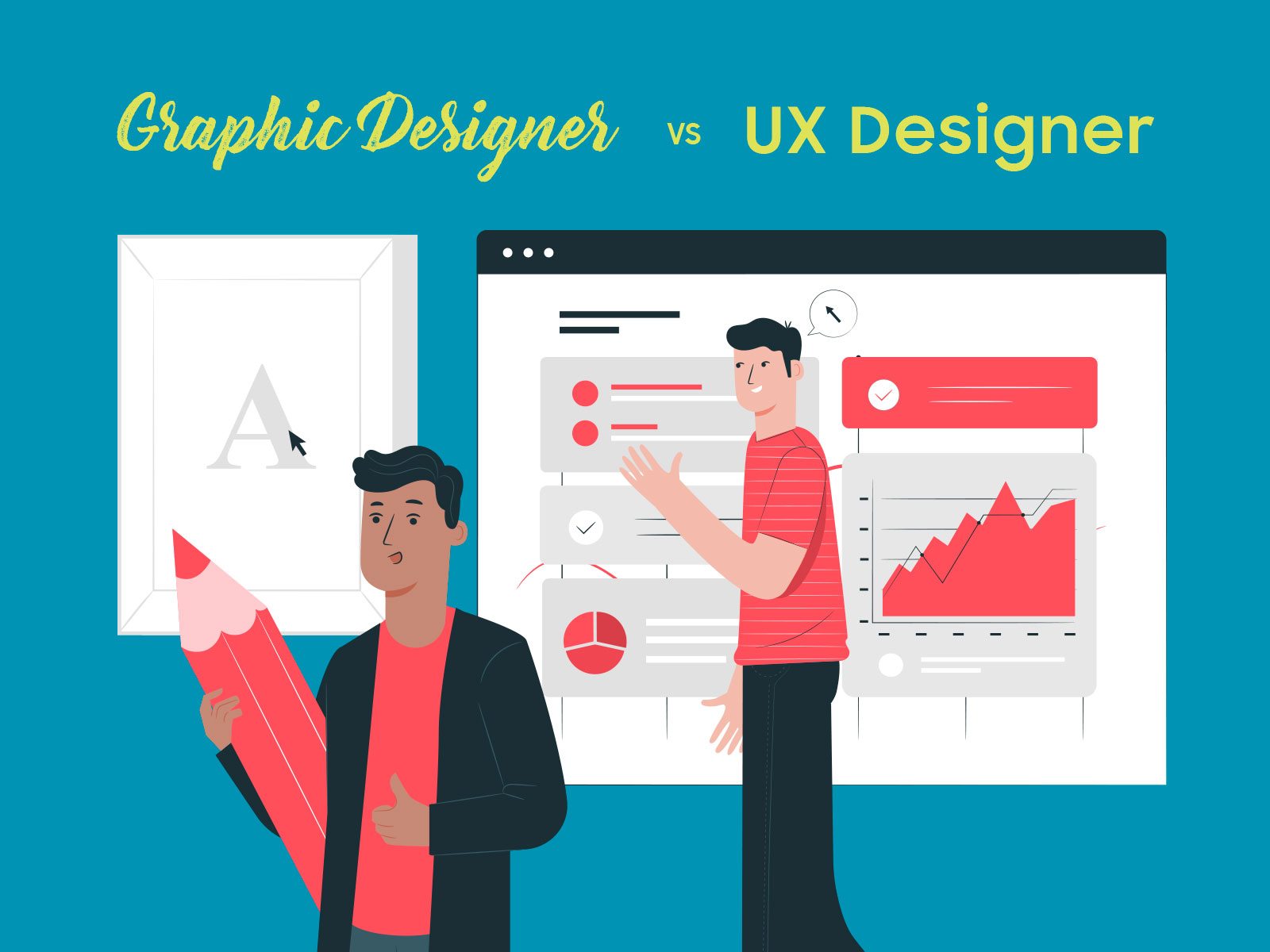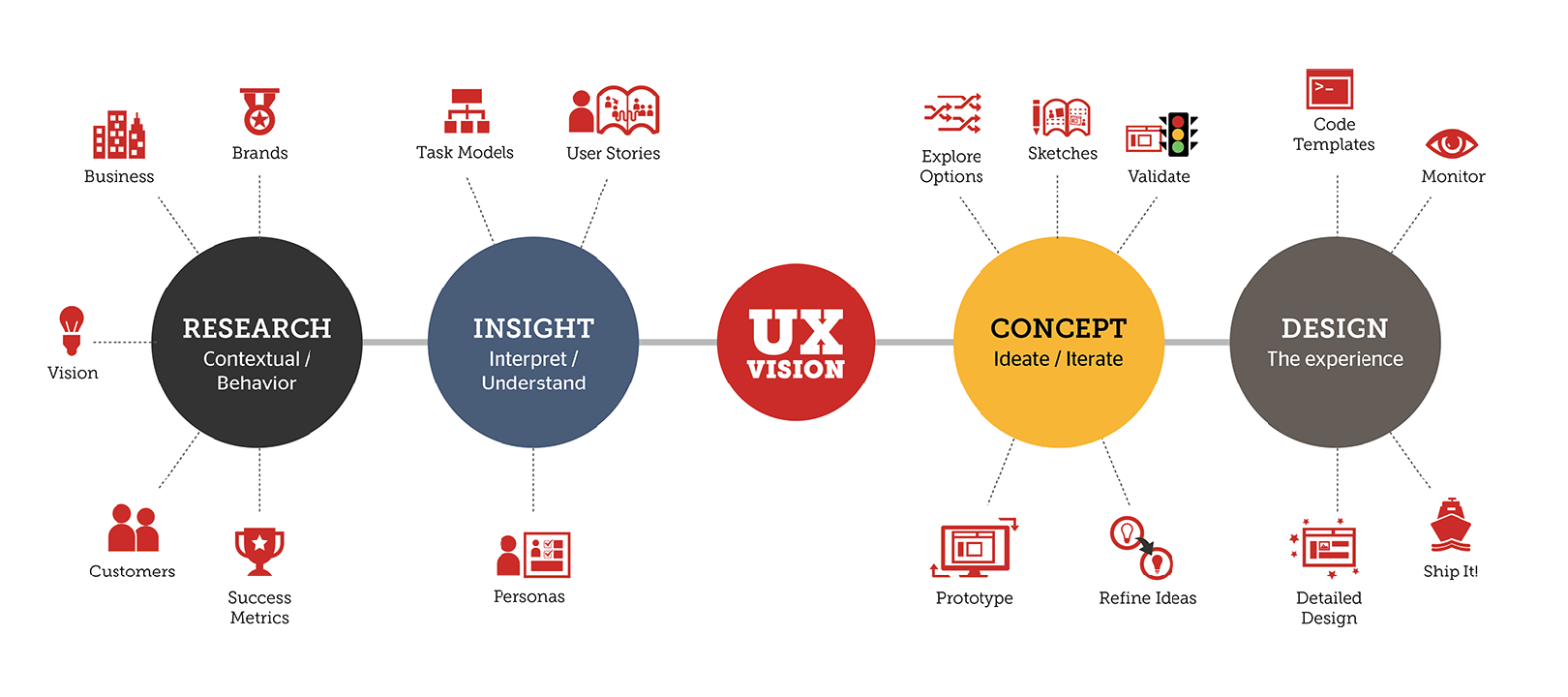In the past, “designer” was used as a broad term which could usually be summed up as your career field. With the digitalization of the planet, however, this term could be referring to a variety of different careers and fields, and simply calling yourself a designer might cause some misperceptions of what it is exactly that you do.
Although it may not always seem that important to know the differences between types of design, if you are a company working in a digital space, it is a good idea to familiarize yourself with the specifics. Should the time come, you will then understand exactly what to look for and what the description of a graphics designer or a UX designer might mean on someone’s CV. Let’s take a look at the differences.
Graphics Designer
In most cases, people understand what graphics design is, as it is the basis of where many design fields actually begin. It can also be a lot easier to understand than UX design for a number of reasons. To put it simply, graphics design is the art of deciding exactly how something should look, based on an individual’s own knowledge and experience.
Graphic designers have the role of deciding on colors, fonts, arranging elements, and creating those elements which need to be arranged accordingly. There isn’t one specific area where this skill needs to be applied since it can be used over a broad range of projects ranging from print advertisements and logo design to the design of websites and mobile apps. (You’ll see where the similarities with UX design come in soon).
Graphic design is therefore all about the way things look. Although many creative fields are merging to have multiple tasks outside of the original descriptions, if we were to look strictly at the description of graphics design, we could say that it is simply about the look and creative display of a project, and that a graphics designer’s purpose is to make things look good (or bad if that were the project).
UX Designer
So now that we know what graphics design is in the simplest form, we can look at UX design. This might get a little more complex but let’s look at it simply first.
Understanding UX Design
To understand UX design, you first need to understand that “UX” is the experience which users have when they interact with a product. So, as you may have figured out by now, UX design is the creation of user-centered design through methods which meet user wants and needs and provide an experience that users will find simple and/or delightful.
UX designers therefore need to solve problems which will provide insight into how a product, service, website, etc. should be designed based on user behavior. For example, if users would be visiting an ISP website, the UX designer would create a flow for users to get to the various packages in a way that appeals to those users. The Internet Advisor website is a great example of a design that isn’t over the top, but it’s highly functional and easy to use.
UX designers therefore focus on logic and structure of elements which consumers will actually interact with. They therefore usually work with website prototypes, wireframes, app prototypes, site maps, flows and many other usage-related tasks. The next part is where it might get a little harder to follow, but try to bear with us.
Phases of UX Design
There are two distinct phases of UX which take place – the research phase and the validation phase.
First, during the research phase, UX designers will do research into intended users through the use of various methods and tools. This gives them a better understanding of what the users’ wants and needs are and what they may prefer when it comes to the UX of the intended product. Some of these tools and methods include competitive analyses, persona creations, interviews with individuals from the target market, and more. They will even design prototypes, running test versions with the target market to gather more insight from users and more accurately design the UX in a way that users want it designed.
The second phase of UX design – the validation phase – comes after the product has actually launched. In the validation phase, UX designers will analyze the usability of the product, identifying pain points and determining whether or not the optimum results are coming from the UX of the product. If the desired results are not being met, the UX designer will further analyze user data, revising and making refinements on the design. These refinements would aim to improve results and make the UX more efficient for the company. This process is usually done earlier than later, as assessing the UX at a later stage can come with costly redesigns.
And now while all of this may seem overly complicated, it’s not. With the proliferation of WordPress users are able to customize just about every aspect of their sites quite easily and effectively either using visual editors or bundles themes.
Okay so now that we have explained the phases, just to reiterate simply, UX designers define problems, come up with solutions to those problems, and then revisit and validate the solutions which they created.
Deciding Between UX and Graphics Design
Now that you can probably see the difference between UX design and graphics design, you can make a more informed decision as to what your company might need. With that being said, many creative fields have evolved since their basic introduction, and you may find that many UX designers can also do graphics design or some graphics designers may be able to do UX design. It is important to understand this evolution, as it could assist you in asking the right questions during the hiring process, helping you to potentially find a great multi-skilled creative.
As you can see, graphic design and UX design have their major differences, but still hold some similarities in that they both involve some level of design. While these descriptions may portray each according to their logical definitions, creative fields have evolved and, in many cases, you may find that abilities of each field cross over into the other. If they do not, however, it is important to understand that graphics designers create visually appealing things, while UX designers ensure that the usability of a product meets the demands of the target audience. Now that you understand all the ins and outs of UX and graphics design, you can make an informed decision as to what your company needs and what to look out for.
Recommended:
- What Is A Freelance Graphic Designer? How to Start & Becoming Successful?
- What did Graphic Designers Use Before Computers?
- Are Graphic Designers Paid Well?
- 10 Best Wireless Ergonomic Computer Mice For Graphic Designers
- Top 10 Best Adjustable Computer Chair For Graphic Designers & Office Use
- 10 Times Graphic Designers Should Say “NO” To Clients




